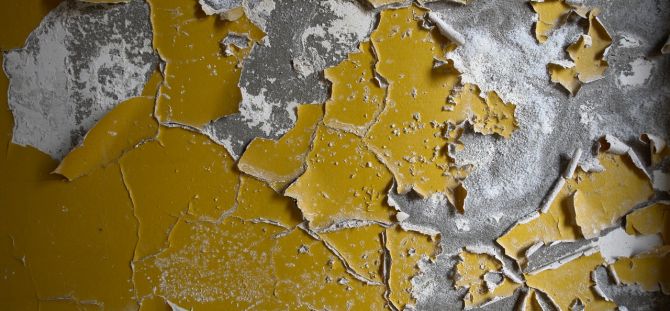Paints and varnishes: types and characteristics
Paints and varnishes are relevant at all times. In addition to giving the surface a decorative look, they protect the building inside and out from external influences. Most of them form a coating that is resistant to repeated wet cleaning using fairly aggressive detergents and disinfectants. Also, modern coatings do not burn and do not support combustion. These factors are decisive when choosing materials for decoration of both private houses and apartments, and public places - hospitals, clinics, schools. How to understand the variety of varnishes and paints and choose the best for yourself, our review will tell.Types of paintwork as intended
All paints and varnishes can be divided according to several criteria - type, purpose, chemical composition. According to their constituent components, they are divided into:- pigmented - enamels, paints;
- unpigmented - drying oils, varnishes;
- auxiliary - solvents, primers, thinners, putties.
- Drying oils are transparent liquids based on vegetable oils after heat treatment. Instead of oils, alkyd resins can be used. Form a strong film on wood and metal. Natural drying oils dry for a long time. They are used as protective coatings, the basis for paints.
- Varnishes - solutions of resins in solvents (acetone, water, ethanol, essential oils). When dried, the varnish forms a solid transparent film that protects the surface from damage and is resistant to various influences.
- Paints are suspensions of coloring pigments with a filler and a binder. Special additives make the surface matte or glossy. Paints can cover almost any surface: concrete, plaster, wood, metal. There are paints for applying to fabric, paper, drywall, glass, asphalt.
- Enamels are suspensions of pigments, fillers and binders in varnish. Compared to paints, they form a stronger and smoother coating.
- Primers are special formulations that provide good adhesion between the paint layer and the surface. Antiseptics are usually added to primers to prevent mold.
- Putties - paste-like mixtures for leveling surfaces before applying paint or wallpapering to them.
- Solvents are intended for removal of spots from paint, cleaning of its surface, brushes after work or dilution of thickened paintwork materials. Before you start working with them, you need to make sure that the solvent is suitable for this type of paint or varnish.
Types of coatings according to operating conditions
Before buying the paintwork material, you should carefully read the information on the label. It always indicates what conditions this composition is suitable for:- weatherproof suitable for outdoor use;
- limited weatherproof suitable for use under awnings, on verandas, terraces, indoors;
- conservation ones are used for temporary protection of products during transportation or storage;
- water-resistant withstand prolonged contact with fresh or sea water;
- special - resistant to certain factors: x-ray radiation, luminous - for a certain type of surface (leather, fabric, rubber);
- oil and petrol resistant inert to lubricants, mineral oils, oil products;
- chemically resistant, depending on the labeling, are not afraid of alkalis, acids and aggressive vapors and gases;
- heat-resistant can be operated at temperatures up to 500 °;
- electrical insulators do not conduct electric current.
Types of coatings by gloss
The degree of gloss that a particular coating gives is determined by a special device and expressed as a percentage. In appearance, all coatings are divided into:- high glossy;
- glossy;
- semi-gloss;
- semi-matte;
- matte;
- deep-opaque.
Other paintwork classifications
In addition to the classifications described above, paints and varnishes are divided according to the following characteristics:- operation in harsh conditions (gas contamination, arctic or tropical climate);
- as intended - for painting leather, hair, cars, fabrics;
- by decorative properties - imitation, reflex, fluorescent;
- according to drying conditions - hot, cold;
- by the method of applying the composition - roller, brush, spray gun, electrophoresis;
- according to the sequence of application - primers, impregnations.

 Painting the walls in the bathroom (50 photos): features and beautiful colors
Painting the walls in the bathroom (50 photos): features and beautiful colors






